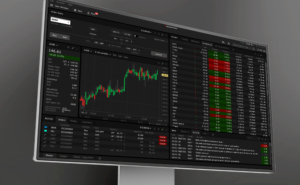Friday’s US jobs data brightened up the mood among Federal Reserve (Fed) doves, as both the NFP, unemployment rate and wages pointed at a slowing labour market in April. The US economy added 175K new nonfarm jobs last month, the wages grow less than 4% – which is still twice the Fed’s inflation target but falling – and the unemployment rate rose to 3.9% versus the expectation of a steady 3.8%. The Fed won’t be in a position to cut its interest rates right away, but is given a higher chance to do so a bit earlier than what was expected at the start of last week. Odds for a September rate cut rose to more than 67% – even though, September would be a politically uncomfortable time for the Fed to start cutting rates given that the presidential election is just around the corner and no one at the Fed wants to be pointed at for manipulating the results.
Anyway, the US 2-year yield shortly dipped to 4.70% after Friday’s soothingly soft US jobs data and the US dollar index tested the 50-DMA to the downside. But note that the inflation leg of the story is far from being resolved and gains could remain limited.
The EURUSD tested the 1.08 resistance, near the 50, 200-DMA and the ytd downtrending channel top. I think that clearing that level sustainably will demand a soft inflation read from the US next week. The USDJPY shortly slipped below the 152 level, is better bid this morning but last week’s sharp moves – which suggest that the Bank of Japan (BoJ) intervened – should soften the yen bears’ hands as they now know that the 160 is the line in the sand. Elsewhere, Cable is fighting the 200-DMA offers but the widening gap between the Fed – which has its hands tied due to a pickup in US inflation – and the Bank of England (BoE) which could justify a summer rate cut due to slowing British inflation and a morose British economic outlook, could limit the pound’s upside potential against the greenback. The BoE will deliver its latest policy decision on Thursday. There is a growing chatter that the bank could use this week’s meeting to throw the foundation of a June rate cut – if that’s the case, we could rapidly see Cable give back its recent gains. The latest CFTC data shows that the speculative positions turned negative on pound over the past two weeks on expectation that the BoE could pull a dovish surprise from its hat this week. And finally, the AUDUSD is better bid ahead of tomorrow’s Reserve Bank of Australia (RBA) rate decision. The RBA is expected to maintain its rate unchanged at 4.35%, but the bank could revise its inflation outlook upwards and the accompanying statement will likely deliver a hawkish message – a message that could give the AUD bulls a further conviction to test the 68-70 cents range against the greenback with the risk of being stopped out if US inflation puts the Fed hawks back in the race. In energy, US crude hit the $78pb level last week. The near oversold conditions and the dovish Fed expectations – that also back the reflation trade – could help the price of a barrel recover to and above the $80pb.
In equities, last week’s dovish Fed pricing and better-than-expected earnings from Apple and Amazon helped the S&P500 eke out a 0.6% gain last week. The index closed last week right on its 50-DMA. Six of the Magnificent 7 stocks reported earnings so far and their results beat lofty market expectations. Nvidia is not due to report before the 22nd of May, so investors could enjoy the fact that the earnings season has been fine, so far. Beyond the Magnificent 7, 77% of the S&P 500 companies have reported a positive EPS surprise so far, according to FactSet. The blended year-over-year earnings growth rate for the S&P 500 printed a strong 5.0% – versus 3-4% expected by analysts.









